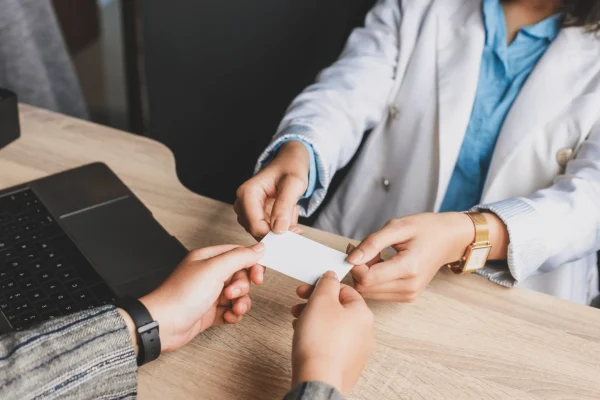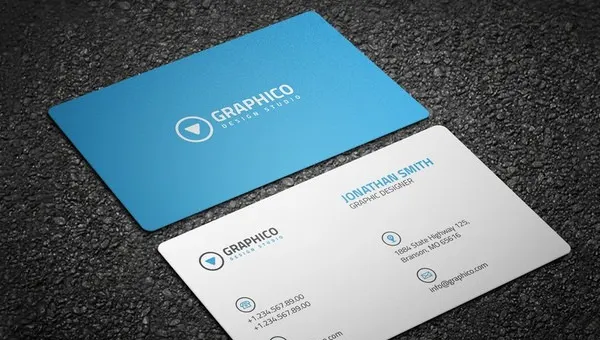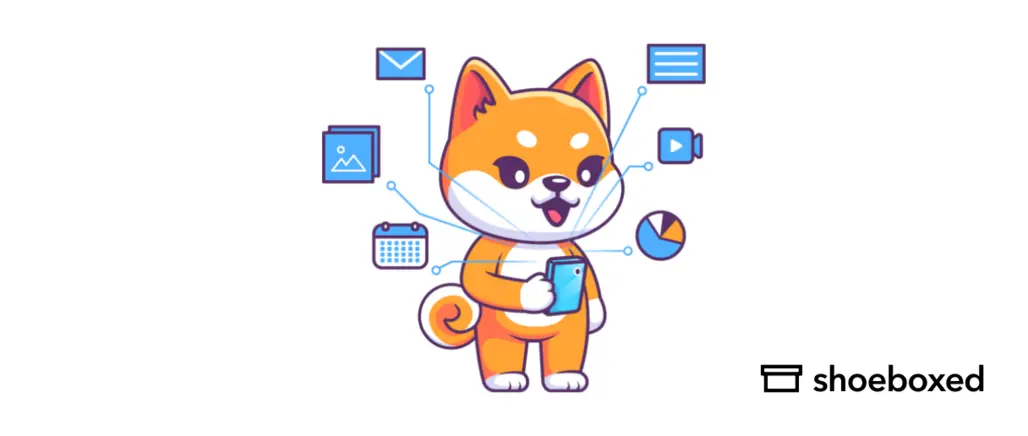What is a contact card? Is it the same as a business card?
Keeping track of everyone’s information is more important than ever when networking during meetups, social events, and even online seminars.
If you’re wondering what a contact card is and how to organize them, you’ve come to the right place!
What is a contact card?
A contact card can be a physical or digital card that contains a person’s relevant information, such as their name, local or global phone number, email address, and social media links.
If the contact card is digital, you can click on icons to:
Instant message them
Make a video call
Create an email message
Be taken to their website and social media
Using a contact card helps you keep in touch with those you meet in the business world and establish professional relationships.
Contact cards can also serve as digital portfolios that showcase your skills and experience and make it easier for potential employers to get in touch with you.
How are contact cards used?
Contact cards can be used in practically any business setting, including the following:
Business meetings
Networking events
Social events
Online events

Handing a card to a client
Similar to a business card, a contact card can help with your and your company’s professionalism.
When exchanging business contact information, look at the other person’s card before putting it away.
After the event, you can look at all the cards you collected to review the connections you made and create any follow-up emails.
Is a contact card the same as a business card?
No. A contact card is slightly different from a business card.
Typically, a business card has a person’s name and job title, the company’s name and logo, a work number, and a work email address.
A contact card, on the other hand, will contain more personal information, such as:
Social media profiles
Personal and work phone numbers
Additional details about the person’s skills and experience
A photo of the person
Contact cards can be digital and shared through email, messaging apps, or social media platforms.
Digital vs physical contact cards: which one should I use?
You can either use digital or physical contact cards.
With the increased use of technology, digital contact cards have become more convenient to quickly share your information with others.
Examples of digital contact cards, Beaconstac
Digital cards also have options to add information, notes, and attachments.
On the contrary, physical contact cards are great for face-to-face networking because they allow you to exchange contact information quickly and easily without needing your phone or an internet connection.

A physical contact card with information on the back and front, Template.net
No matter which type of contact card you choose to use, it should reflect who you are in a professional light, so make sure to include all of the necessary details in a simple design.
How to keep track of contact cards using Shoeboxed
If you have a lot of physical contact cards, Shoeboxed can digitize and organize them electronically.
Shoeboxed’s software allows you to scan your cards with a click of a button or use their Magic Envelope to send and outsource scanning.
Either option will result in your contact cards being transferred to your Shoeboxed account.
Each card’s information will be extracted and organized as a digital contact list that can be easily searched, sorted, and exported to other platforms.
How to export contact cards with ShoeboxedIf you’re juggling dozens of digital contact cards, a digital contact filing system might be the best option.
Some applications, such as Google Contacts and Microsoft People, use your frequent contacts from their email system to create basic contact information that you can then expand upon.
How to create a new contact card on Outlook contact
Do business cards like a boss ✨
Use Shoeboxed’s app to organize business cards, receipts, and more. Try free for 30 days!
Get Started TodayFrequently asked questions
How do you send a contact card?
1. Open your contacts app or address book.
2. Find the contact card you want to send and click on it.
3. Click on the three dots (…) next to the edit button. You can copy, print, or export the contact information.
4. Choose the method you want to use to send the contact card, such as email or text message.
5. Enter the recipient’s information and send the contact card.
6. Alternatively, some contact apps have a “Share Contact” option that lets you quickly send a contact card without going through the individual contact details.
How do I organize my contact cards?
You can sort contact cards alphabetically, with a binder, by category, with an app, or scan and digitize them with Shoeboxed.
In conclusion
Contact cards are a great way to share your contact information with others.
While it may seem informal to include information unrelated to your company, the contact card is designed to represent you.
So whether you use physical or digital contact cards, include the information that best describes yourself and your strengths in business.
Tammy Dang is a staff writer for Shoeboxed covering productivity, organization, and digitization how-to guides for the home and office. Her favorite organization tip is “1-in-1-out.” And her favorite app for managing articles and deadlines is Monday.com.
About Shoeboxed!
Shoeboxed is a receipt scanning service with receipt management software that supports multiple methods for receipt capture: send, scan, upload, forward, and more!
You can stuff your receipts into one of our Magic Envelopes (prepaid postage within the US). Use our receipt tracker + receipt scanner app (iPhone, iPad and Android) to snap a picture while on the go. Auto-import receipts from Gmail. Or forward a receipt to your designated Shoeboxed email address.
Turn your receipts into data and deductibles with our expense reports that include IRS-accepted receipt images.
Join over 1 million businesses scanning & organizing receipts, creating expense reports, and more—with Shoeboxed.
Try Shoeboxed today!



